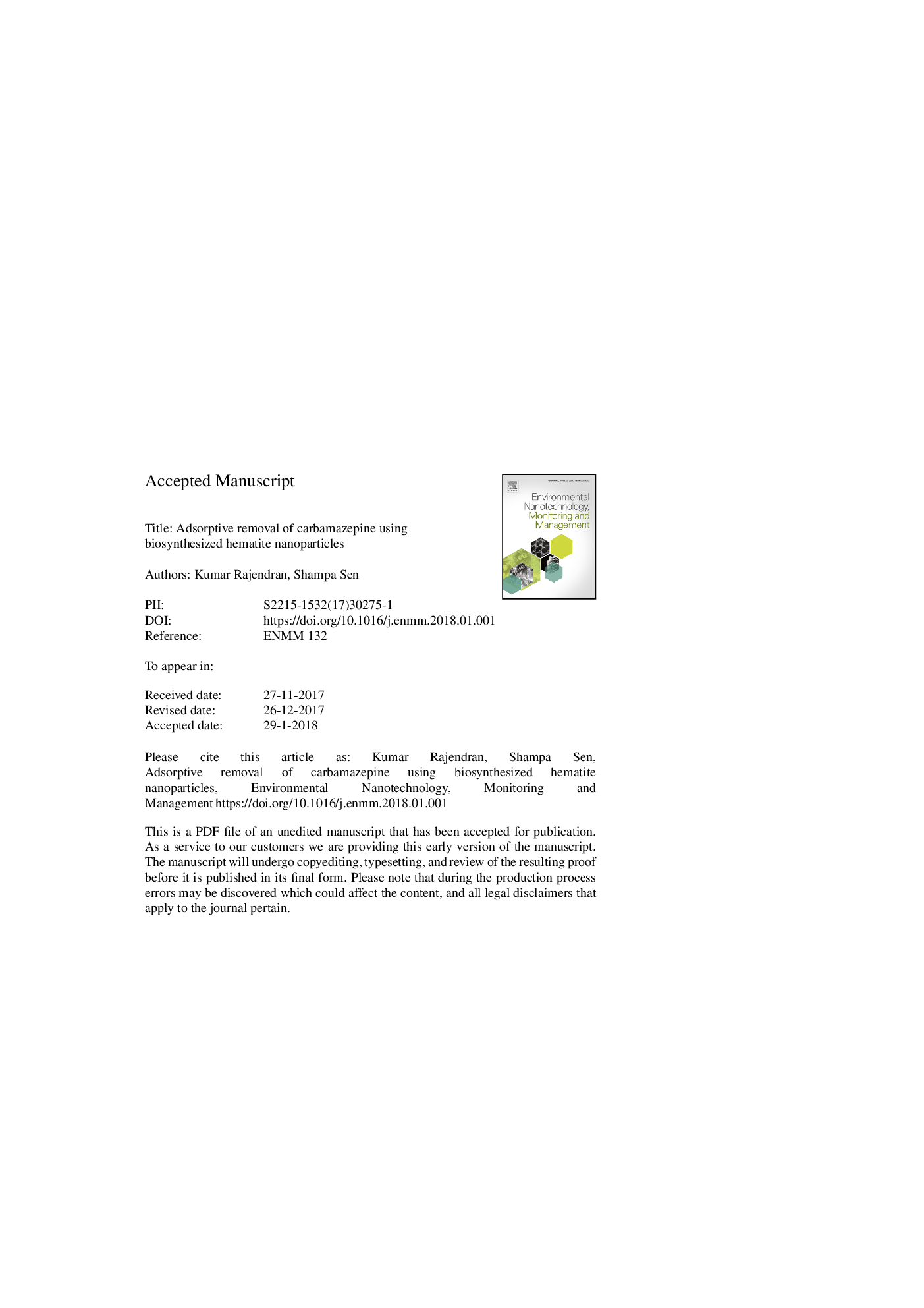| Article ID | Journal | Published Year | Pages | File Type |
|---|---|---|---|---|
| 8855660 | Environmental Nanotechnology, Monitoring & Management | 2018 | 20 Pages |
Abstract
Pharmaceutical pollution is threatening the lives of millions of people across the globe. One of such pollutant, carbamazepine (CBZ) has been found to be toxic to aquatic invertebrates, fish, bacteria, algae and cause severe side effects in humans. Nano-remediation has received considerable attention in recent years due to their good adsorption capacity because of their large surface area. In the present study, the efficacy of eco-friendly biosynthesized hematite nanoparticles to remove CBZ in water sample as a function of time and concentration was studied. Scanning electron microscopy revealed that the nanoparticles were about 20-40â¯nm in diameter. The adsorption efficiency increased with time and attained equilibrium within 2.5â¯h. The experimental results best fitted to Freundlich model, suggesting the multilayer adsorption of CBZ on hematite nanoparticles. Within 2â¯h, >90% of CBZ desorbed from hematite nanoparticle surface. It was concluded that hematite nanoparticles produced by biosynthesis can be considered as an effective CBZ adsorbent.
Related Topics
Life Sciences
Environmental Science
Environmental Chemistry
Authors
Kumar Rajendran, Shampa Sen,
